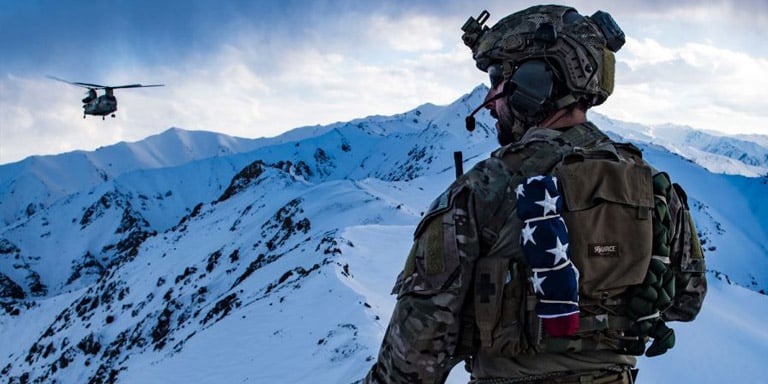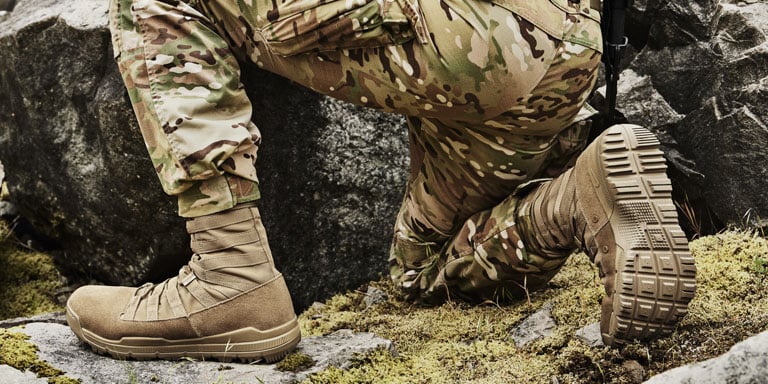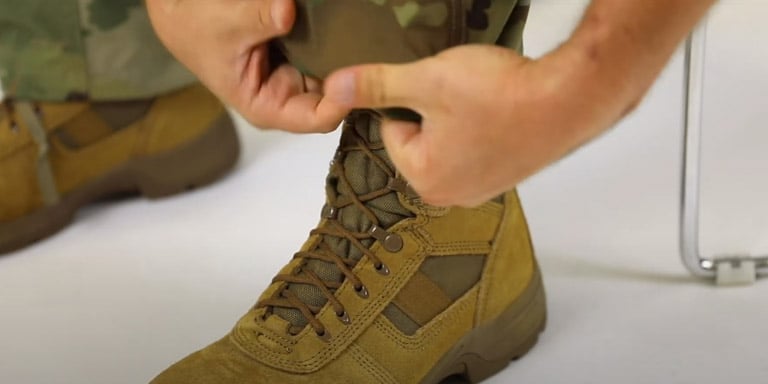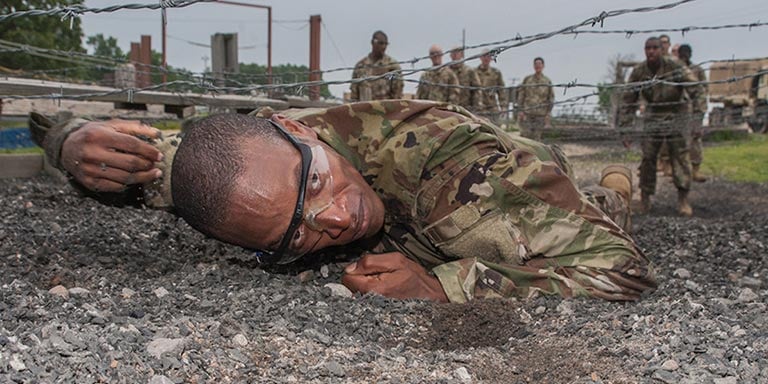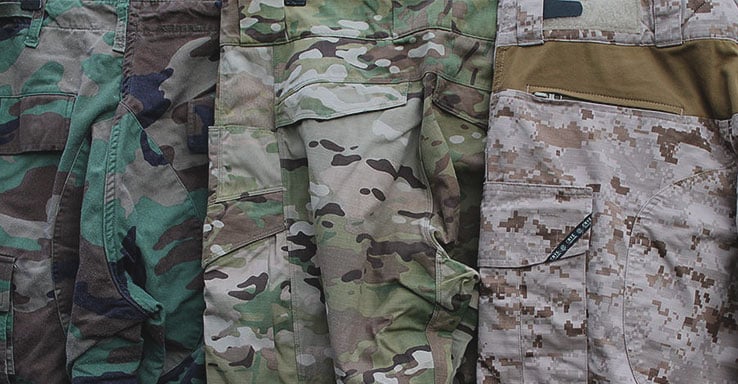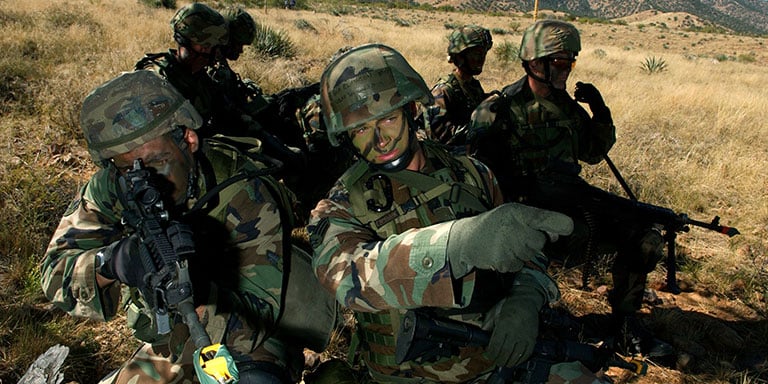
The Battle Dress Uniform, or BDU, is a retired uniform worn by the United States Armed Forces from the early 1980s into the early 2000s. Revered by many, this classic U.S. military uniform is most readily recognizable by its M81 woodland camouflage pattern. Despite its retired status, it is still widely used today by both law enforcement and federal agencies.
Whether you're a shooter, a military enthusiast or you just enjoy heavy-duty, solidly built clothing, there are many reasons to wear BDUs today. In this guide, we'll cover everything you need to know about purchasing the Battle Dress Uniform. From the components and fabrics of the uniform itself to the storied history of its use in combat, this comprehensive resource will have you wearing your own set of BDUs in no time.
Components of the Battle Dress Uniform
The Battle Dress Uniform is broken down into four basic components: BDU pants, BDU coats, BDU patrol caps (and/or boonie hats) and combat boots. Given the sturdiness and utility of each component, they can be worn separately for a variety of purposes, or together as a complete set.
BDU Pants
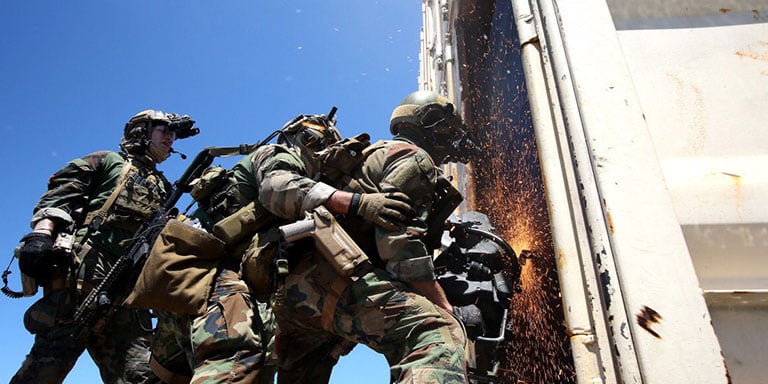
Notable for their six-pocket design (one cargo pocket on each leg, two front pockets and two back pockets), BDU trousers leave little to be desired in the way of storage. Reinforcements are sewn into high-stress areas to ensure a tough, battle-ready construction. Nowadays, BDU-style pants are available in a variety of colors and fabric options to fit professional and casual needs alike. If you want to learn more about military and tactical-style pants, our guide on how to choose tactical pants is an essential read that features everything you need to know. Shop BDU Pants
BDU Coats
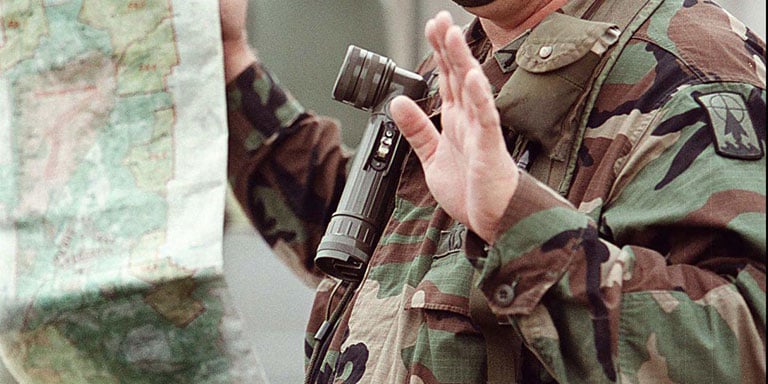
Like BDU pants, the most stand-out feature of a BDU coat is its set of four pockets — two on each breast, and two more below those. BDU coats are usually worn over an undershirt and, like BDU trousers, they come in many fabric and color options. If you plan on wearing your BDU pants and coat together, it's recommended that you buy them as a set from the same manufacturer to ensure consistency both in color pattern and materials. Shop BDU Coats
BDU Patrol Caps and Boonie Hats

When it comes to BDU headwear, there are two options available: patrol caps and boonie hats. Patrol caps are the more common of the two. Also known as a field cap, BDU patrol caps are kepi-style hats with a flat top and a stiff, rounded brim. A boonie hat, on the other hand, is a great all-weather option that features a brim that encircles the entire hat. Also known as bucket hats, boonie hats help to keep the sun out of your eyes and the rain off of your face. Our guide to choosing a tactical hat has more information on finding the right tactical headwear. Shop BDU Patrol Caps | Shop Boonie Hats
BDU Combat Boots
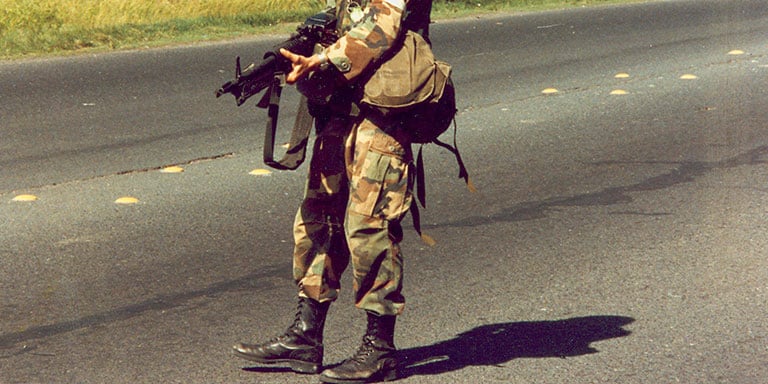
On the heels of Vietnam-era U.S. military uniforms, the Battle Dress Uniform typically featured black combat boots (and sometimes even Vietnam-style jungle boots). While there were technically never any "official" BDU boots, it was usually recommended that boots worn with the Battle Dress Uniform be constructed either with leather or Cordura nylon uppers and tough, grippy, rubber outsoles. Our guides on choosing military footwear and choosing tactical footwear offer a deep dive into which style might be most appropriate for you. Shop Military Boots | Shop Tactical Boots | Shop Jungle Boots
BDU Fabric Weaves and Materials
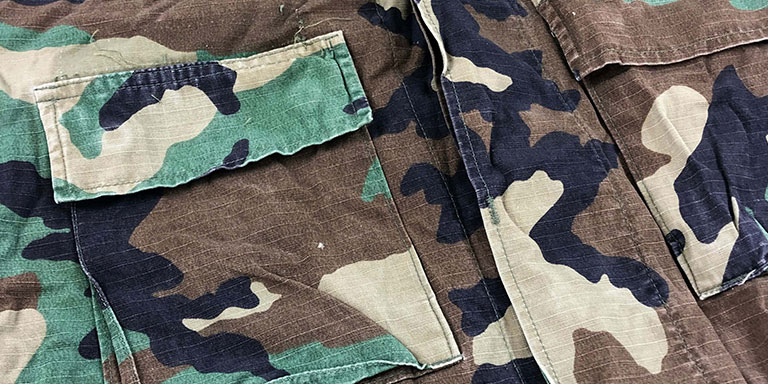
To deal with a wide range of operational environments and climates, BDUs were manufactured in a variety of different weaves and from a variety of different materials. Manufacturers still produce BDUs from different weaves and fabrics for the same reason: to offer users a good deal of options depending on the climate in which they're wearing their BDU clothing.
The BDUs worn by the military from the 1980s to the early 2000s were sewn to strict military specifications — specifically MIL-T44047E for BDU pants and MIL-DTL-44048H for BDU coats. While those regulations are outdated, today's BDUs are still typically crafted to those same standards.
BDU Weaves
The two weaves commonly used in the manufacturing of BDUs are ripstop and twill. Ripstop fabrics are engineered by weaving synthetic fibers into a tightly woven square. This reinforced, woven square strongly resists tearing and, even if the garment does tear, the tear is designed to stop in its tracks (hence the name "ripstop").
Twill, on the other hand, has a higher thread count than ripstop. Typically used in the production of blue jeans, twill is a heavier weave, resistant to wrinkling and wind. Twill tends to retain body heat better than ripstop, making it an ideal weave for more moderate climates.
BDU Materials
There are four fabric blends commonly used in the production of BDUs, the first of which is a 60% cotton / 40% polyester twill blend. This heavyweight cloth is built for long-term performance. It's comfortable, durable, and it tends to retain its color over multiple washings. On the other hand, it's prone to tearing. It is resistant to wind and wrinkling, though, and it's a great blend if you need to balance comfort with durability.
When it comes to hot weather, there's no better choice than a 100% cotton ripstop BDU. Cotton is lightweight, breathable and comfortable by its nature, and when it's made in a ripstop weave, it won't tear as easily. On the downside, 100% cotton BDUs will fade, wrinkle and shrink faster than synthetic fabrics like nylon and polyester. Plus, cotton fabric may lose its weight after multiple washes. Still, if you're looking to prioritize comfort and breathability, go with 100% cotton.
BDUs made in a 65% polyester / 35% cotton twill are ultra-durable. They maintain great color integrity (which means they won't lose their color when they're washed), and they're resistant to shrinkage. The addition of the synthetic polyester fibers means the material is more rugged and will dry more quickly than 100% cotton uniforms. Choose this material when longevity and durability are your biggest concern.
Finally there's NYCO, a 50% nylon / 50% cotton blend. NYCO resists fading, shrinking and wrinkling while providing comfort in cooler temperatures. Weight and heat retention are what separate a nylon / cotton blend from a polyester / cotton blend; NYCO tends to be heavier and retain heat better than poly / cotton blends. NYCO is a great material for when you need longevity and you're going to be in cold weather.
BDU Fit and Size Charts
Service members come in all shapes and sizes, and when you're outfitting hundreds of thousands (and even millions) of them at once, it's important to have an easy, efficient sizing system. Battle Dress Uniform sizes are standardized, and it shouldn't be difficult for you to find the right fit for yourself. The military's BDU sizing system is still in use by manufacturers today, and it's pretty straightforward to use.
It's important to understand that BDU size charts are based not on the lengths and widths of the clothing and fabric themselves, but on the measurements of the individual wearing the clothing. As such, it's necessary to have your waist, inseam, height and chest measurements ready when finding which size BDUs you wear.
Taking Your BDU Measurements
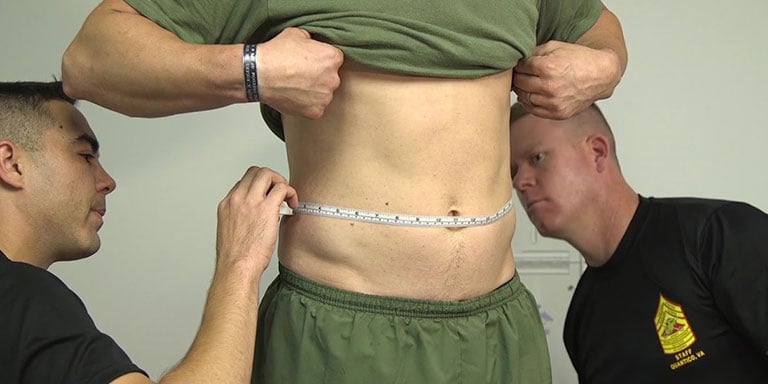
Start by grabbing your measuring tape; we'll start with the waist. Wrap the tape measure around your waist (the portion of your torso just above your belly button) and note the measurement in inches; for the sake of this example, let's say it's 36". Next, we'll measure the chest. Wrap the tape around your torso again, only this time, move it up to the fullest part of your chest (the tape measure will rest right under the armpits). Let's assume this measurement is 40".
Now we'll find your height. Doctors usually take this measurement once a year at an annual checkup, so you should already have it handy. But it's always good to double-check. Remove your footwear, and measure from the soles of your feet to the top of your head. Let's assume this measurement is 72".
Finally, we'll find your inseam. Put on a pair of pants that fits you well. Measure from the top of the inside of the right leg down to the hem of the pants (if you're having trouble finding this measurement, our video on how to measure your inseam should help). We'll assume, for our example, that this measurement comes out to 34" (if your measurement is between two whole numbers, be sure to round to the nearest half inch). Now that we have all four measurements, we can check them against the standard Battle Dress Uniform size chart to find the correct BDU size.
BDU Size Chart
Below, you'll find the standardized military BDU size chart. It's the same chart used by world-renowned BDU manufacturers like Propper and Tru-Spec, two companies who have a storied history in crafting Battle Dress Uniforms. This size chart should be universal and accurate for any brand claiming to make BDUs sewn to military specifications:
| Size | Waist | Inseam | Height | Chest |
| XSR | 23 - 27 | 29.5 - 32.5 | 67 - 71 | Up to 33 |
| SS | 27 - 31 | 26.5 - 29.5 | 63 - 67 | 33 - 37 |
| SR | 27 - 31 | 29.5 - 32.5 | 67 - 71 | 33 - 37 |
| SL | 27 - 31 | 32.5 - 35.5 | 71 - 75 | 33 - 37 |
| MS | 31 - 35 | 26.5 - 29.5 | 63 - 67 | 37 - 41 |
| MR | 31 - 35 | 29.5 - 32.5 | 67 - 71 | 37 - 41 |
| ML | 31 - 35 | 32.5 - 35.5 | 71 - 75 | 37 - 41 |
| LS | 35 - 39 | 26.5 - 29.5 | 63 - 67 | 41 - 45 |
| LR | 35 - 39 | 29.5 - 32.5 | 67 - 71 | 41 - 45 |
| LL | 35 - 39 | 32.5 - 35.5 | 71 - 75 | 41 - 45 |
| XLR | 39 - 43 | 29.5 - 32.5 | 67 - 71 | 45 - 49 |
| XLL | 39 - 43 | 32.5 - 35.5 | 71 - 75 | 45 - 49 |
| 2XLR | 43 - 47 | 29.5 - 32.5 | 67 - 71 | 49 - 53 |
| 2XLL | 43 - 47 | 32.5 - 35.5 | 71 - 75 | 49 - 53 |
| 3XLR | 47 - 51 | 29.5 - 32.5 | 67 - 71 | 53 - 57 |
| 3XLL | 47 - 51 | 32.5 - 35.5 | 71 - 75 | 53 - 57 |
| 4XLR | 51 - 55 | 29.5 - 32.5 | 67 - 71 | 57 - 61 |
Note: All sizes are in inches
There are two components to each BDU size on the chart. The first component indicates a range of waist and chest sizes into which you'll fall. It will include a letter or two and is sometimes preceded by a number. This component will be any one of the following:
- XS - Extra small
- S - Small
- M - Medium
- L - Large
- XL - Extra large
- 2XL - Double extra large
- 3XL - Triple extra large
- 4XL - Quadruple extra large
The second component indicates differences in your inseam and height. It exists to accommodate differences in sleeve length and pants length, and will be indicated by any one of the following three letters:
- S - Short
- R - Regular
- L - Long
Using the measurements we took above as our example, we can look at the size chart and find our BDU pants and coat sizes. To find the correct pants size, we'll need the waist and inseam measurements we took, which came out to 36" and 34", respectively. Comparing those measurements to the size chart, we find that our pants size is LL, or large / long.
We can do the same thing with our height and chest measurements — 72" and 40", respectively — to find our BDU coat size. The chart indicates that we should purchase an ML (medium / long) coat. Note that if you're between sizes, it's normally better to size up. Always write your measurements down and keep them handy; as long as they don't change, they'll be useful in helping you find your size again for a future purchase. Shop Propper BDUs | Shop Tru-Spec BDUs
How to Wash BDUs
Washing BDUs isn't too difficult. After all, they're made from incredibly durable materials that are meant to maintain their integrity during combat. There are a few key things to keep in mind, though, before throwing your BDUs in the washer and dryer:
Do not use any fabric softeners
Do not use any detergents that contain bleach or brighteners
Avoid extreme hot or cold temperatures when washing and drying your BDUs
Never iron your BDUs
The History of BDUs in the U.S. Armed Forces
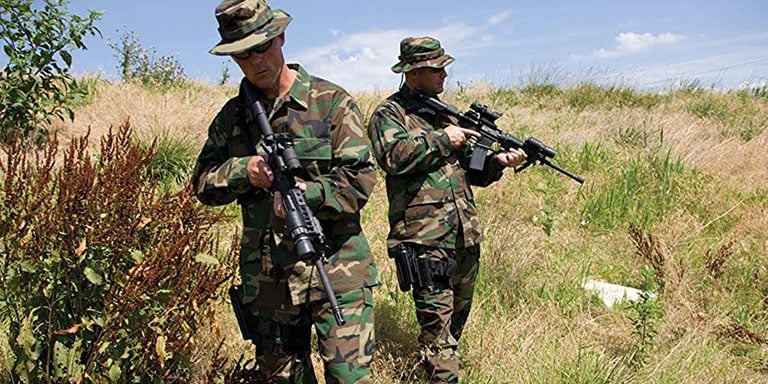
The Battle Dress Uniform was designed to replace the olive drab OG-107 uniform utilized throughout the 1950s, '60s and '70s. The OG-107 uniform was plenty serviceable during the Korean and Vietnam wars, but technology was changing rapidly, war theaters and tactics were morphing, and the U.S. military felt that a new uniform was in order.
The military began research, development and testing on the Battle Dress Uniform and its iconic M81 woodland colorway, and BDUs were issued to high-ranking members of each branch of the armed forces in September of 1981. In October of the same year, the Battle Dress Uniform was issued to soldiers, airmen, sailors and Marines military-wide.
After their initial 1981 release, BDUs saw some slight tweaks and changes due to feedback from service members. The first BDUs came with buttoned waist adjustment tabs, but these were eliminated due to negative feedback. Quality issues with stitching and fit resulted in updates in the manufacturing process to eliminate these problems. The size of the coat collar was also reduced per service member requests.
The Battle Dress Uniform underwent much bigger changes as well. After all, not all operating environments are the same and, as such, different service members required different camouflage patterns and materials depending on where they were stationed. These differences resulted in the creation of a few notable BDU variants.
Temperate Weather Battle Dress Uniforms - TWBDUs
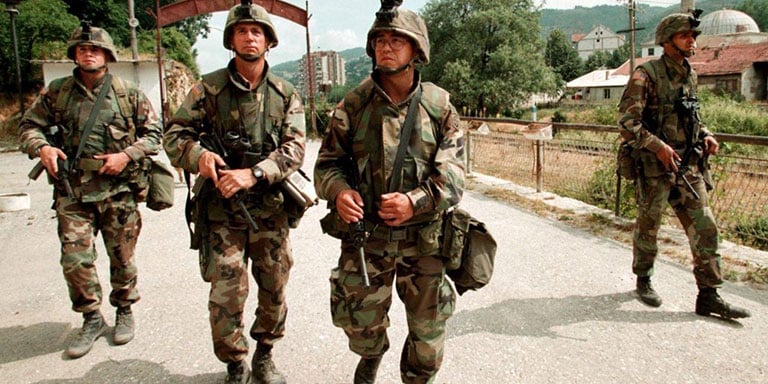
The first round of BDUs came to be known as the Temperate Weather Battle Dress Uniform, or TWBDUs. They were made from a 50% nylon / 50% cotton twill blend. The problem with that fabric blend was that beyond 65 °F, the uniform tended to retain heat, leaving troops far too hot and in danger of overheating. New fabric blends were needed for those operating in hotter climates.
Hot Weather Battle Dress Uniforms - HWBDUs

To solve the heat retention issues of TWBDUs, the military created a set of BDUs made with 100% cotton ripstop fabric. These uniforms came to be known as Hot Weather Battle Dress Uniforms, or HWBDUs. The all-cotton construction of these uniforms maximized airflow, keeping users cool and comfortable even in high-temperature environments.
Enhanced Hot Weather Battle Dress Uniforms - EHWBDUs
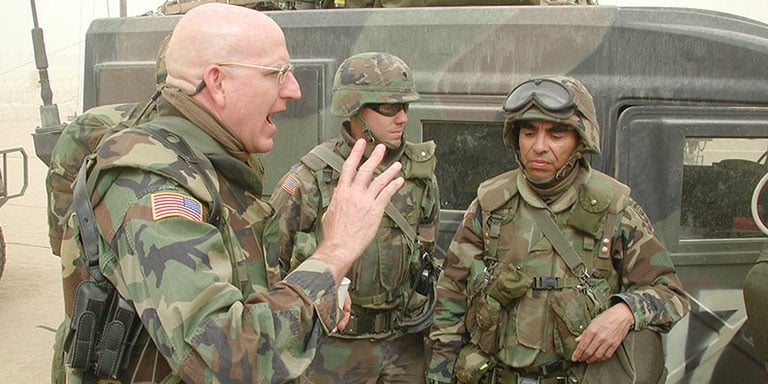
The HWBDUs, while an improvement over TWBDUs, were not perfect. Service members noted that they were too short in many instances, and the cuffs of the coats tended to fray rather quickly. This feedback resulted in the creation of the Enhanced Hot Weather Battle Dress Uniform, or EHWBDUs, in 1996. EHWBDUs were made from a 50% nylon ripstop / 50% cotton blend that helped correct the fraying issues while still providing an airy, cool feel.
Desert Battle Dress Uniforms - DBDUs
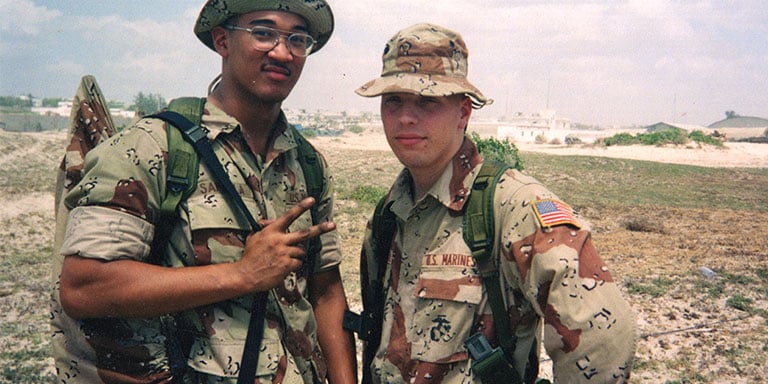
As the military was crafting the original Battle Dress Uniform with the M81 woodland camouflage pattern, sociopolitical tensions made it apparent that the U.S. Armed Forces may one day need to intervene in conflicts in the Middle East. Thinking ahead, the military began parallel development on a Battle Dress Uniform with a six-color desert camouflage pattern. This pattern came to be known as the chocolate-chip camouflage pattern (or cookie dough camouflage pattern) among service members due to its resemblance to chocolate chip cookies.
The resulting Desert Battle Dress Uniforms (or DBDUs) were not received well by those who wore them. Service members believed that the camouflage pattern contrasted too starkly with the terrain around them, thus defeating the purpose of the camouflage altogether. By the time the 2003 invasion of Iraq came around, the military had ceased using DBDUs with the six-color desert camouflage pattern.
Phasing Out the Battle Dress Uniform
Like the OG-107 uniform before it, the Battle Dress Uniform did not last forever. Each branch phased out BDUs within about 25 to 30 years of their issuance. Some of the subsequent uniforms that replaced BDUs are still in use in their respective branches today. If you're interested in the topic, our U.S. military uniforms article covers uniforms worn by the United States Armed Forces, both past and present.
Army BDUs

The U.S. Army received their first round of BDUs on October 1, 1981. In addition to the BDU pants and BDU coats, the army also received BDU patrol caps, BDU boonie hats, and the classic M-65 field jacket. By 1989, every soldier was wearing BDUs in the M81 woodland camouflage pattern.
In 2004, the Army introduced a new uniform set to replace BDUs: the Army Combat Uniform, or ACU. It was phased in from 2005 to 2008, but the ACU's Universal Camouflage Pattern (UCP) quickly proved unpopular. The Army went back to the drawing board and finally, starting in 2014, they unveiled the Operational Camouflage Pattern (or OCP), which is still in service today. If you're interested in purchasing an OCP uniform for yourself, our OCP Uniforms Buyer's Guide covers everything you need to know at length.
Air Force BDUs
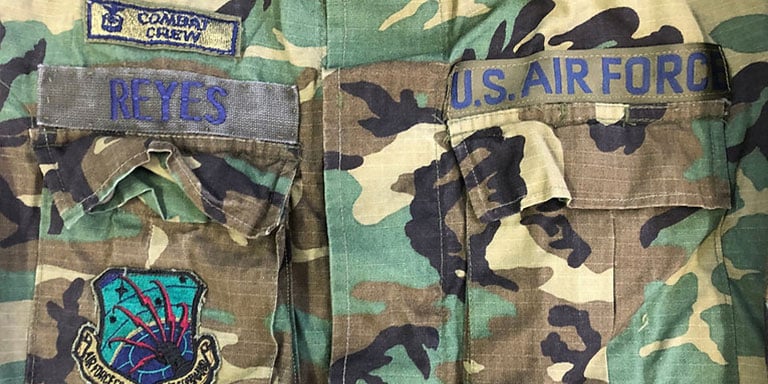
In October of 1981, the U.S. Air Force initially began issuing BDUs to airmen. At first, only armed units stationed overseas (like Combat Controllers and Security Forces) wore BDUs, but by the summer of 1987, the entire USAF was wearing them.
In 2006, the Air Force announced a new uniform called the Airman Battle Uniform, or ABU. It featured a Digital Tigerstripe pattern with a similar colorway to the Army's Universal Camouflage Pattern. Like the Army's ACUs, though, the ABUs didn't take. The Air Force eventually adopted the Army's Operational Camouflage Pattern, fully transitioning to OCPs by April of 2021.
Marine Corps BDUs
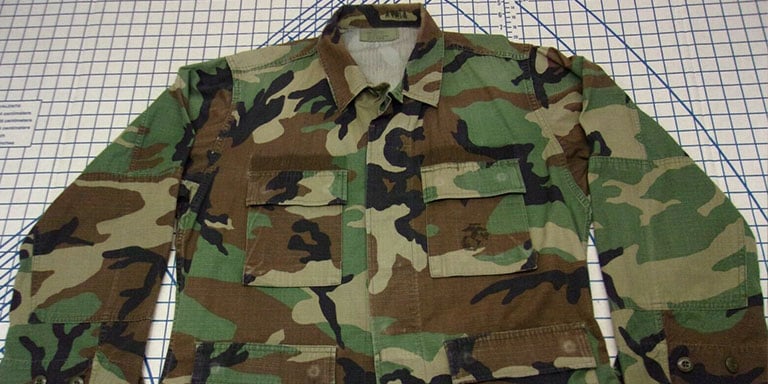
The U.S. Marine Corps began wearing BDUs on October 1, 1981, like every other branch. By October of 1991, the USMC added nametapes to their BDUs. The nametape (with the wearer's last name) was worn on the right chest pocket, and a nametape reading "U.S. MARINES" was worn on the left pocket. The Marine Corps BDUs also featured the iconic Eagle, Globe, and Anchor (EGA) insignia on the wearer's left chest pocket.
The USMC was the first branch to begin transitioning away from BDUs. Their MARPAT (or Marine pattern) camouflage — a digital camouflage pattern featuring green, tan, brown and black — was first approved in June of 2001. The Marine Corps Combat Utility Uniform (MCCUU) featuring the MARPAT camouflage was phased in starting in 2002, and BDUs were officially phased out of the Marine Corps in 2005. The USMC still wears MCCUUs today.
Navy BDUs
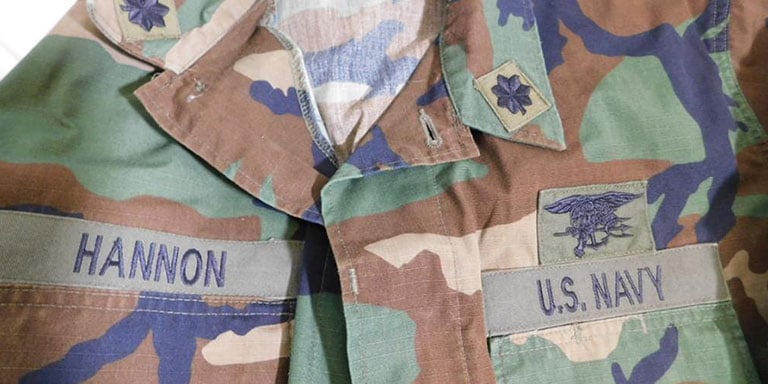
Navy sailors also began wearing BDUs in October of 1981. They simply referred to them by a different name: the Camouflage Utility Uniform, or CUU. Navy BDUs featured the M81 woodland camouflage pattern and the temperate-weather, 50% nylon / 50% cotton twill materials.
Between 2004 and 2007, the Navy introduced the Navy Working Uniform, or the NWU. The uniform was made with three colorways: Type I, Type II and Type III. Type I NWUs featured a blue, black and gray Digital Camouflage pattern. Known colloquially as the "blueberry" uniforms, Type Is were eventually phased out. Type II NWUs had a Desert Digital camouflage worn almost exclusively by Navy SEALs. Finally, Type III NWUs consist of a Digital Woodland pattern. The Navy officially stopped wearing BDUs in 2012 — the last branch to phase them out completely.
Present-Day BDUs
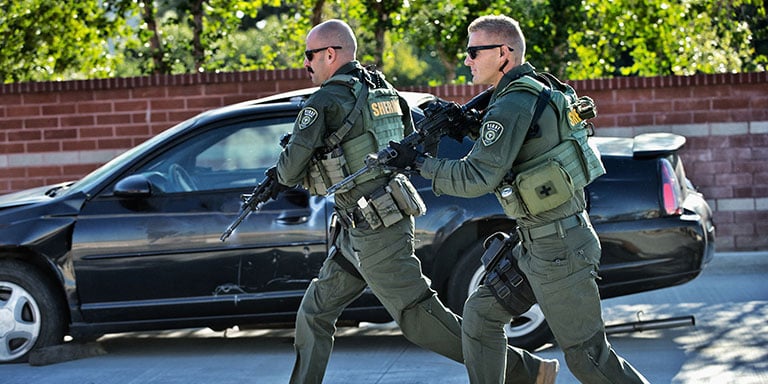
Though the U.S. Armed Forces officially replaced Battle Dress Uniforms altogether by 2012 thereby rendering them obsolete for military purposes, BDUs are still produced and worn all over the country today. The Drug Enforcement Agency (DEA) and SWAT teams across hundreds of local, state and federal departments still wear BDU-style uniforms during training and real-world exercises.
Public servants who work for the Federal Emergency Management Agency (FEMA) often wear BDUs during search and rescue missions. Some fire departments even use BDUs when conducting rescue operations. BDUs are also sought-after by shooters, hobbyists and those who enjoy collecting classic, authentic U.S. military uniforms.
Though they're no longer in service within the United States military, BDUs have had a storied history in combat. They underwent plenty of changes and updates during their lifetime, and their durability and utility result in their continued use among professionals and amateurs alike. The Battle Dress Uniform is a historical combat uniform inextricably tied to the conflicts of its era, and it will continue to be fondly remembered by many for years to come.
Did you find this article helpful?


